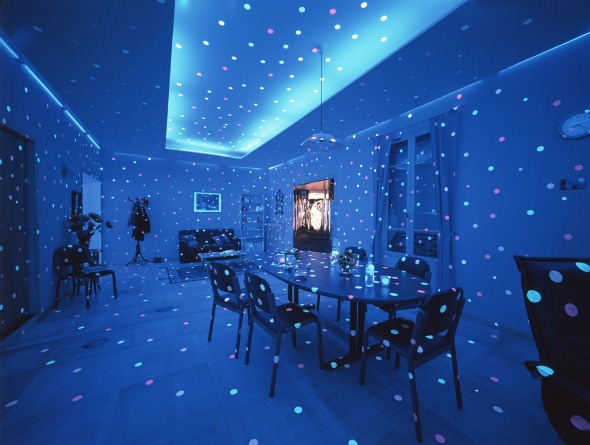
The exhibition Double Vision: Contemporary Art from Japan, curated by Mr. Kenjiro Hosaka, National Museum of Modern Art Tokyo, and Ms. Elena Yaichnikova, critic & independent contemporary art curator, Moscow, will open on July 22, 2012 at the Tikotin Museum of Japanese Art and Haifa Museum of Art.
From the Press Release:
The exhibition “Double Vision” consists of two parts – “imaginary” and “real” – providing a view of opposing facets of contemporary Japanese society through the eyes of 30 artists of different generations. The exhibition will be displayed simultaneously at the Tikotin Museum of Japanese Art and the Haifa Museum of Art, in cooperation with the Japan Foundation. It is supported by the Embassy of Japan in Israel, and marks the 60th-anniversary celebration of diplomatic relations between Israel and Japan.
“Double Vision” introduces Israeli audiences to contemporary Japanese art as seen through the eyes of two curators from different countries; Russia and Japan. Despite the obvious allusion to the two people involved in creating the exhibition, the title also refers to a special way of looking at the world that simultaneously encompasses two poles, two worlds, two sides of things and phenomena.
Among the exhibiting artists are those who work outside the borders of the island nation of Japan. These include Hiraki Sawa in London, and Yoko Ono and Yuken Teruya in New York. Accordingly our subtitle “Contemporary Art from Japan” can be interpreted in different ways – to mean the place where the artist lives, is from, or simply the fact that he is Japanese.
And even in cases where the artist lives in Japan itself, there are differences worth bearing in mind. Japan is a country of islands stretching in a narrow chain from the Sea of Okhotsk in the north to the South China Sea and Taiwan in the south. For that reason, as one traverses its length not only are there differences in climate – from Hokkaido in the subarctic zone to Okinawa in the subtropics – but also cultural distinctions as well. As such, to understand these works it becomes unexpectedly important to know where the artists were born, studied and live.
For example, Osaka is known as a city of merchants and of comedy. Artists who were born and raised there include Yasumasa Morimura and Kenji Yanobe. Famous for its art universities, Kyoto is for that reason also celebrated for its atmosphere of mutual collaboration among young artists. It is exactly in such a place that groups drawing upon multiple genres, such as dumb type, can emerge. It is noteworthy that recently, many artists who are based outside of major cities altogether have come to prominence. This is not only connected with practical considerations, such as the ease of obtaining studio space. Artists are intentionally becoming decentralized. Lieko Shiga now lives in Sendai in the Tohoku region, which is very far from her hometown. Yoshitomo Nara lives in Nasushiobara, a mountainous area some 150 kilometers north of Tokyo. He was born in Aomori Prefecture in the north of Japan, and even today places great significance on the dialect of that region. And since 1990, Shinro Ohtake has been living in a place called Uwajima on the island of Shikoku, which has a circumference of about 750 kilometers. At 700 kilometers to the west of Tokyo, it is quite remote.
The exhibition is rich in material that can shake up the concept of “dualism,” and create a space where reality is inseparable from the imaginary.
For additional information, consult the website: www.hma.org.il
Haifa Museum of Art – 26 Shabbetai Levi Street, Haifa
Tikotin Museum of Japanese Art , 89 Hanassi Ave., Haifa
Museum Hours: Sun, Mon, Tue, Wed 10:00 a.m. – 4:00 p.m; Thu 10:00 a.m – 7:00 p.m; Fridays 10:00 a.m. – 1:00 p.m; Saturdays 10:00 a.m. – 3:00 p.m. The exhibition will close on October 21, 2012.





